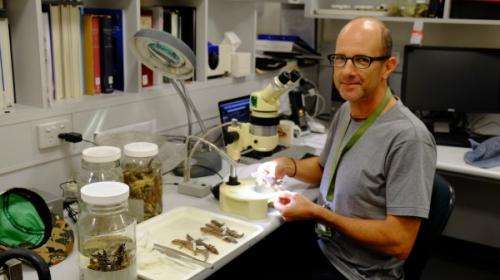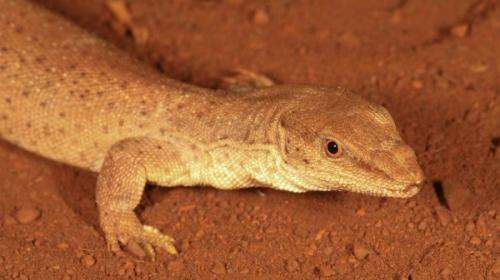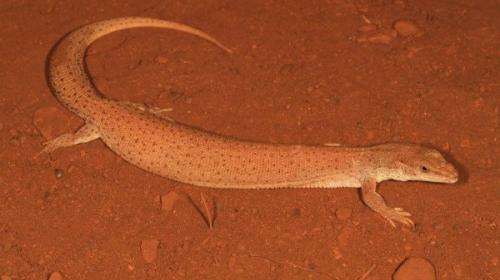The journey to discovering species

Did you know the world's smallest goannas, the Dampier Peninsula goannas (Varanus sparnus), are about 5,000 times lighter than their larger relatives, the Komodo dragons? The recent announcement of the discovery of the goanna species near Broome garnered quite a buzz of excitement in Australia and internationally.
As the scientist who led the project and announced the find, I was asked several times—what was it like to discover it? It was certainly an exciting but drawn out process, which I outline here:
Step 1. Discovery
Roy Teale and Greg Harold of Biota Environmental Sciences first encountered the species in 2009.
They were conducting a survey north of Broome and thought there was something 'funny' about the small goannas they captured.
This was the first, actual, discovery of the new species.
Step 2. Genetic testing
This was conducted at the South Australian Museum, as part of a larger project on goannas.
When the strong results came back several months later suggesting about 6–7 million years divergence from their nearest relatives, that was our prompt to set aside several other projects to focus on these intriguing goannas.
Step 3. Detailed examination of specimens
An essential step when scientifically describing a species is conclusively demonstrating how the new species differs from other related species.
Indeed, this part is the most time consuming as we had to sort through hundreds of specimens of V. brevicauda (a close relative) to ensure the new species hadn't been overlooked in older collections.

Step 4. Write-up and documentation
Next we meticulously put together detailed written descriptions (the language is very exacting), elaborate tables of measurements, photographs showing key characters, and a distribution map.
This step can be painstakingly slow, as precision is required at all stages.
Step 5. Peer review and publishing
Once the documentation is complete a paper is submitted to a journal and experts evaluate the evidence that this is actually a new species and not taxonomists crying 'Wolf'!
This step can take months but is an essential part of the scientific process.

The manuscript goes through several more rounds of revision until the editor is convinced the results are sound.
When the paper is ready for publication it is sent to the printer when the journal issue has a full complement of articles (this can take months as well).
Only after I am able to cradle a hard copy of the journal in my hands (a happy day!), do I announce a new species discovery.
From discovery, to description, to announcing a new species, it's certainly a team effort involving many different parties, each bringing their expertise to the scientific species discovery process.
In Australia, perhaps the somewhat frustratingly slow pace of this process can be offset by the wonderful reptile diversity we enjoy here.
In other words, keep 'watching this space' for continued species discoveries, bearing in mind the slow pace of crying 'Eureka!' and never 'Wolf'!
Provided by Science Network WA




















